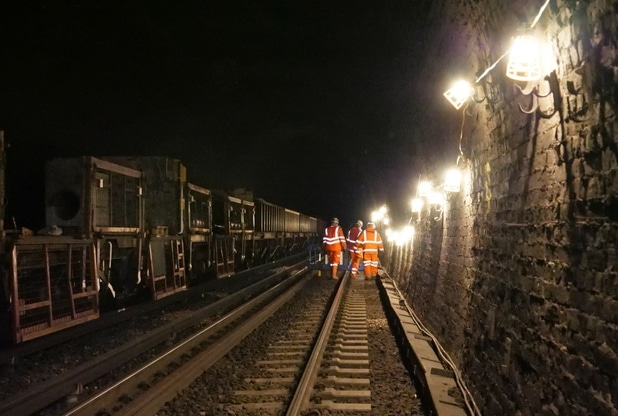Weekend train services to and from London will be severely affected throughout the summer as Network Rail carries out major upgrades to the Sevenoaks tunnel.
While the works are taking place, Southeastern services on the Hastings line, which passes through Tunbridge Wells, will be diverted via East Croydon and Redhill, a much longer journey. There will also be replacement buses operating between Tonbridge and Sevenoaks.
At almost two miles, the 150-year-old structure is the longest mainline railway tunnel in the south-east.
But leaks and poor drainage have been a major issue for the Victorian engineering feat since its completion in 1868.
The build-up of water has damaged the track, signalling and power supply, which cause faults, delays and speed restrictions.
The upgrade will begin on Good Friday (March 30) and is set to continue over a period of seven months – it is due to end on November 4, though the disruption will mostly be over by September 23.
The line will be affected over a total of 13 weekends, including the Easter and late May and August bank holidays.
The work is being carried out as part of a £300million government-funded programme to tackle ‘delay hotspots’.
Struggle
Initially the final section of old drainage will be excavated and a new, gravitational piped-drainage system installed. Then the track, signalling and power supply will also be replaced.
Steve Kilby, Network Rail’s Programme Manager, said: “When the tunnel was built in the 1860s, the engineers weren’t aware of just how much water they would encounter underground.
“It’s been an ongoing struggle to keep services running reliably through the tunnel since.
“Thankfully, we now have the funding to sort the drainage once and for all and replace the track, signalling and power supply – meaning better, more reliable journeys for passengers.”
Dates of disruption
March 30-April 3
May 19
May 26-28
June 2
June 23-24
July 14-15
August 5
August 18-19
August 25-27
September 1-2
September 9
September 23
November 4
Not another rail strike
A year after construction of the tunnel began, the workforce went on strike in April 1864 because of their overcrowded and unhygienic living quarters.
There were also riots when the dire conditions led to outbreaks of disease, including smallpox.
The workers and their families were billeted in huts built by contractor John Jay, who also provided a tin church at Tubs Hill which doubled as a school.
How it all started
The Sevenoaks tunnel was built at the same time as the Polhill tunnel under the North Downs, with work starting in 1863.
The geology of the hill is characterised by clay meeting greensand, which means it is subject to ground movement and water springs.
Borings carried out by the railway’s surveyor failed to identify the problem, and water leaks meant that constant pumping was required to prevent flooding.
An air-flow shaft at the northern end of the tunnel near Oak Lane was so badly affected by water seepage that the contractor John Jay (1805-72) used it to supply the town with water.
He formed the Sevenoaks Water Works Company and had the water pumped to a reservoir at Bayley’s Hill.








